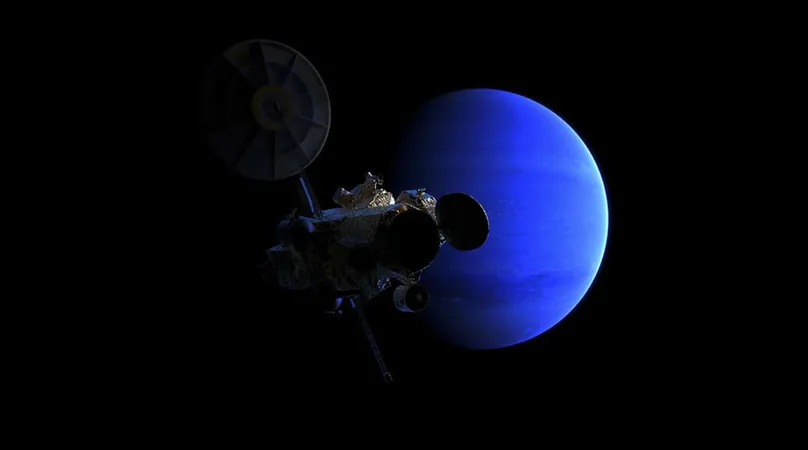
Bold New Mission to Neptune: Unlocking the Secrets of the Ice Giant and its Mysterious Moon!
2024-09-16
Introduction
In the quest to unravel the mysteries of our solar system, planetary scientists have set their sights on Neptune, the farthest known planet, which has remained shrouded in mystery since Voyager 2 last visited it in the 1980s. With advancements in technology surpassing those of the 1977 probe, a new mission named Arcanum aims to unveil the secrets of Neptune and its intriguing moon, Triton.
Neptune and Triton: A Brief Overview
The Arcanum mission doesn't just orbit Neptune; it plans to land on Triton, a celestial body with tantalizing potential. Neptune boasts winds that can reach incredible speeds and is home to the mysterious "Great Dark Spot," a massive storm system. Meanwhile, Triton captures attention with indications of possible active volcanism and the tantalizing possibility of a subsurface ocean. Could it harbor the conditions necessary for life?
Mission Components
This ambitious mission is divided into three key components: an orbiter named Somerville, an orbital maneuvering system called Tenzing, and the lander known as Bingham. Each component plays a crucial role in conducting detailed studies of both the planet and its moon.
The Somerville Orbiter
The Somerville orbiter will not only provide a scientific platform for observing Neptune but will also serve as a communication hub for the lander, ensuring data transmission back to Earth. With an array of instruments, including cameras, spectrometers, and a powerful telescope operating in visible and infrared wavelengths, Somerville is set to explore not only the Neptunian system but also distant objects within the Kuiper Belt.
Tenzing: The Orbital Maneuverer
Tenzing, the orbital maneuverer, is equipped to facilitate the lander's journey to Triton. It will maneuver the lander into position for landing and then relay crucial data back to Somerville, which features a more robust communication system. Intriguingly, Tenzing includes three "penetrators" designed to breach Triton’s ice shell, potentially allowing researchers to study the moon’s interior. However, details remain scarce on whether these penetrators will reach Triton’s hypothesized underwater ocean.
Bingham: The Lander
Completing the trio is the Bingham lander, outfitted with its own engines, landing gear, and a suite of scientific instruments. With multiple cameras, a seismometer to detect geological activity, a thermometer, and a mass spectrometer, Bingham aims to provide insights into Triton’s surface conditions. Nevertheless, it may lack the capability to explore the moon's most enigmatic regions independently.
Launch and Mission Timeline
All these systems depend on the cutting-edge launch capabilities of SpaceX's Starship, which boasts a significant increase in payload capacity. The projected mission timeline indicates a launch in 2030, with arrival at Neptune expected by 2045. While Arcanum is currently one of several proposed missions without formal backing from major space agencies, the increasing urgency for exploration may pave the way for future endeavors to this distant frontier.
Conclusion
As humanity prepares for a potential return to Neptune, the anticipation builds: will we uncover the secrets of this icy giant and its captivating moon, or will they remain elusive mysteries in our vast solar system? Stay tuned!


 Brasil (PT)
Brasil (PT)
 Canada (EN)
Canada (EN)
 Chile (ES)
Chile (ES)
 España (ES)
España (ES)
 France (FR)
France (FR)
 Hong Kong (EN)
Hong Kong (EN)
 Italia (IT)
Italia (IT)
 日本 (JA)
日本 (JA)
 Magyarország (HU)
Magyarország (HU)
 Norge (NO)
Norge (NO)
 Polska (PL)
Polska (PL)
 Schweiz (DE)
Schweiz (DE)
 Singapore (EN)
Singapore (EN)
 Sverige (SV)
Sverige (SV)
 Suomi (FI)
Suomi (FI)
 Türkiye (TR)
Türkiye (TR)